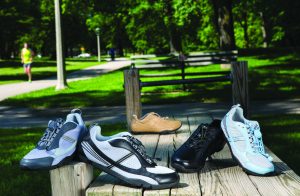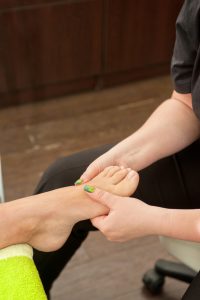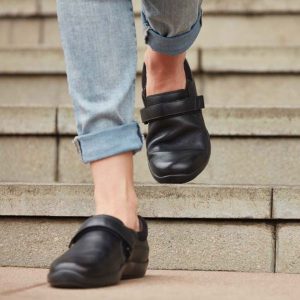At No Cost Shoes, we’re often surprised by how many people are unaware of Medicare’s coverage of shoes for diabetic Americans. It’s a huge benefit, and one that can make a big difference in the lives of people with diabetes. But, as more people find out about this coverage, those who do not qualify have started asking: “What can I do if I want diabetic shoes and Medicare won’t cover them?” Luckily, there are a few steps you can take if you find that coverage is not available to you at this time.
What are the Medicare requirements for diabetic shoe coverage?
 In order for Medicare and most insurance plans to cover diabetic shoes, a doctor must attest that the patient needs them by filling out a Certificate of Medical Necessity (CMN). Patients may qualify for a CMN if they have both diabetes and a pre-existing foot condition of some kind. Qualifying foot conditions include:
In order for Medicare and most insurance plans to cover diabetic shoes, a doctor must attest that the patient needs them by filling out a Certificate of Medical Necessity (CMN). Patients may qualify for a CMN if they have both diabetes and a pre-existing foot condition of some kind. Qualifying foot conditions include:
- history of partial or complete foot amputation
- history of previous foot ulceration
- history of preulcerative callus
- nerve damage because of diabetes with signs of problems with calluses
- poor circulation
- foot deformity
Some people have diabetes but are unaware if they have any foot condition. Others may have foot conditions but not be diabetic. For these individuals (many of whom can still benefit a great deal from diabetic shoes!) there are a few options.
Tip #1: Visit a podiatrist to confirm whether you have any hidden foot issues.
 Although your family doctor is often the one filling out a CMN for your diabetic shoes, early warning signs of diabetic neuropathy and other foot conditions are most likely to be identified by a podiatrist.
Although your family doctor is often the one filling out a CMN for your diabetic shoes, early warning signs of diabetic neuropathy and other foot conditions are most likely to be identified by a podiatrist.
If you have diabetes, Medicare covers one foot exam every 6 months. Take advantage of this coverage and maintain regular appointments to stay on top of your foot health. If you have a hidden condition that may entitle you to free diabetic shoes, or if you develop one in the future, a podiatrist can identify the first signs.
Tip #2: Look online for affordable diabetic shoes.
Many people with and without diabetes who do not qualify for diabetic shoes covered by Medicare still benefit from therapeutic footwear a great deal. It can increase comfort and mobility, as well as playing an important role in preventing amputation and associated foot issues. However, the high-priced specialty shoes that a local medical supplier or podiatrist may sell can be out of the price range of someone without coverage.
Online suppliers are a great option here. Even without coverage, you’ll want to look for a Medicare-approved supplier, such as nocostshoes.com, to ensure you are getting a high-quality product. In our case, therapeutic shoes with specialty inserts cost only $99 online – much less than you would pay in a specialist’s office.
Tip #3: Check your health insurance for additional coverage options.
Some insurance companies cover orthotics for a wider range of patients, so it’s a good idea to have a closer look at your policy before paying out-of-pocket for your shoes. Contact your insurance company to clarify the conditions they may have for covering orthotics, therapeutic shoes, and other specialty items, particularly if a doctor recommends them.
If you purchase your own insurance coverage instead of getting it through an employer, it can be helpful to “shop around” for a provider with a workable policy on durable medical equipment such as therapeutic shoes. These policies can also help cover the deductible for Medicare coverage, which can eliminate out-of-pocket cost if and when you do qualify for shoes.
Additional questions? Give us a call!
At No Cost Shoes, we are diabetic shoe experts. With direct billing options to both Medicare and insurance, we know exactly how coverage works. We can also offer great, affordable options to those who are not currently eligible for coverage. For more information, call us at 1-866-923-2423. You can also check your eligibility for coverage using our easy online portal here.




 professional involved in your purchase. Many insurers will only cover diabetic shoes that are custom fitted, which requires a professional shoe fitting. Custom fitted shoes are safer for your feet and more comfortable, so skipping this step is not advisable.
professional involved in your purchase. Many insurers will only cover diabetic shoes that are custom fitted, which requires a professional shoe fitting. Custom fitted shoes are safer for your feet and more comfortable, so skipping this step is not advisable. critical to keeping your feet supported, comfortable and safe.
critical to keeping your feet supported, comfortable and safe.